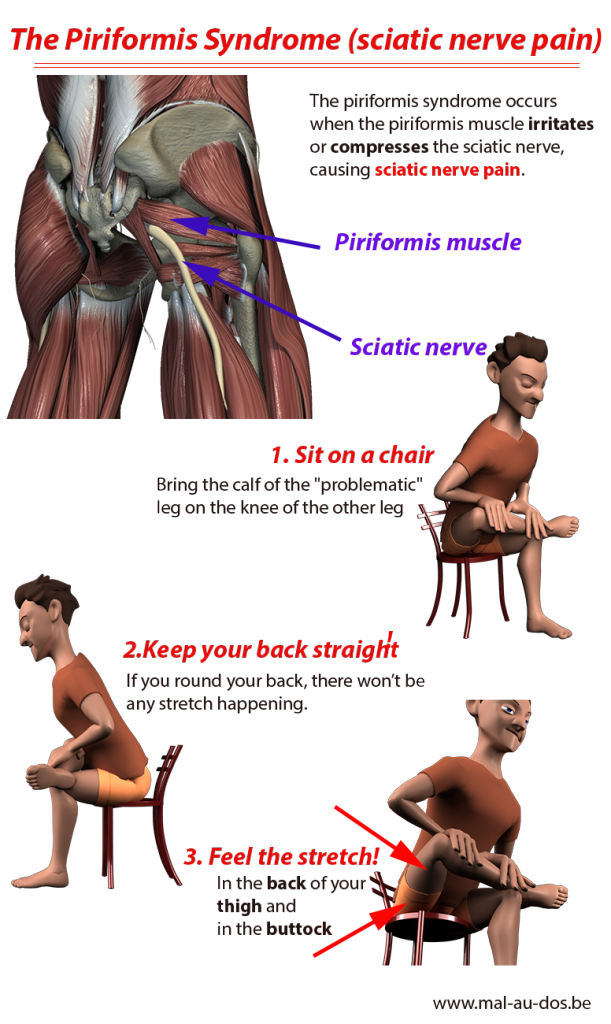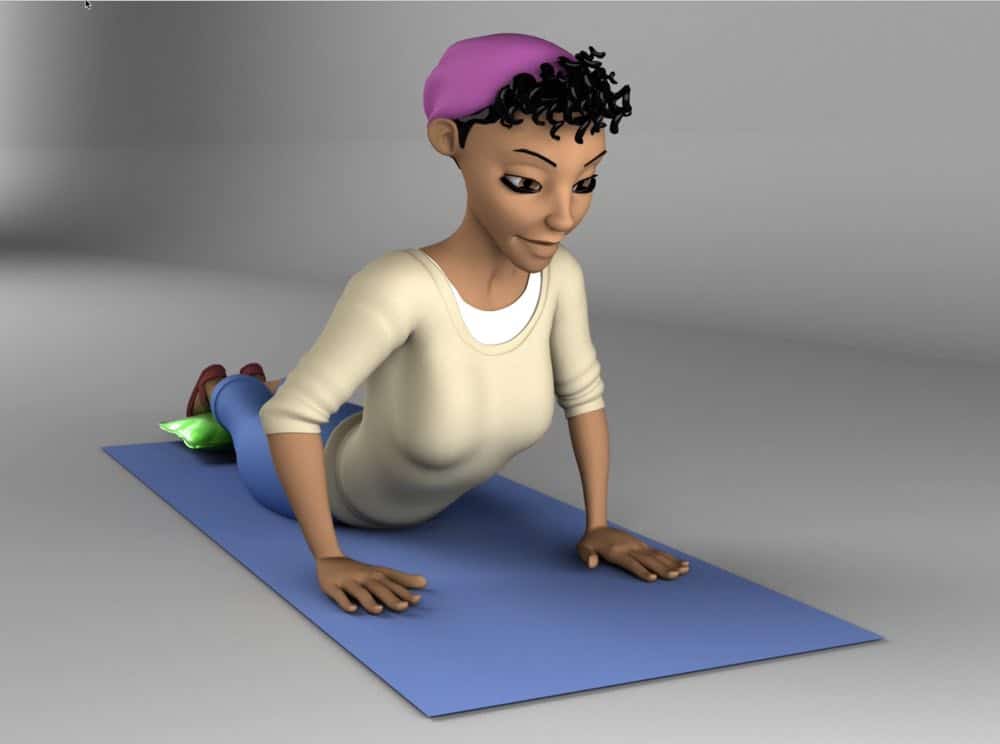In this article, you will learn how to stretch the piriformis muscle sitting on a chair. You will also learn about the piriformis muscle and why it can cause sciatic nerve pain.
What is the piriformis syndrome?
The piriformis syndrome is a condition that occurs when the piriformis muscle irritates or compresses the sciatic nerve, causing sciatic nerve pain.
The piriformis muscle is a small muscle located in the buttock behind the big gluteal muscle. It connects the anterior part of the sacrum to the upper part of the femur muscle.
The piriformis muscle helps lift the leg, turn the foot and ensures the stability of the hip and pelvis.
The piriformis syndrome causes sciatic pain in the buttock and / or in the upper part of the back of the thigh.
How to stretch the piriformis muscle sitting on a chair.
The video is in french however there are subtitles in English: be sure to enable them in the player if you don’t see them.
 Piriformis syndrome is a condition which is believed to result from compression of the sciatic nerve by the piriformis muscle. Symptoms may include pain and numbness in the buttocks and down the leg. Often symptoms are worsened with sitting or running.
Piriformis syndrome is a condition which is believed to result from compression of the sciatic nerve by the piriformis muscle. Symptoms may include pain and numbness in the buttocks and down the leg. Often symptoms are worsened with sitting or running.
Causes may include trauma to the gluteal muscle, spasms of the piriformis muscle, anatomical variation, or an overuse injury. Diagnosis is difficult as there is no definitive test.
Source: Wikipedia Piriformis syndrome
What causes Piriformis syndrome ?
Piriformis syndrome can occur following:
- An injury caused by a accident or a bad fall.
- Sedentarity: not moving enough or sitting all day.
- Overwork: go jogging or biking and overdoing it, compared to what the muscle can handle.
- Piriformis Muscle spasms, caused by the dysfunction of an adjacent muscle, of a joint or hip.
- Wrong move: lifting something that is too heavy holding a bad posture, bending down and getting up raise without taking care…
- Overweight: piriformis syndrome is a frequent condition for the pregnant woman or for people with obesity.
Sitting all day, even on the best desk chair ever can cause piriformis syndrome & sciatic nerve pain.
Avoid sitting when you can…
Sitting all day, even on the best desk chair can cause piriformis syndrome & sciatic nerve pain.
How to stretch the piriformis muscle to get sciatic nerve pain relief

For this exercise, we’re assuming that sciatica pain shoots down Mark’s right leg.
To stretch the piriformis muscle:
- Sit on a chair:& bring the calf of the right leg on the knee of the left leg
- Gently lean forward & bring the chest towards the leg, as close as you can, but always keeping your back straight.
- Feel the stretch in the buttock and the back of your thigh as you lean forward
More Piriformis stretch pictures & videos







